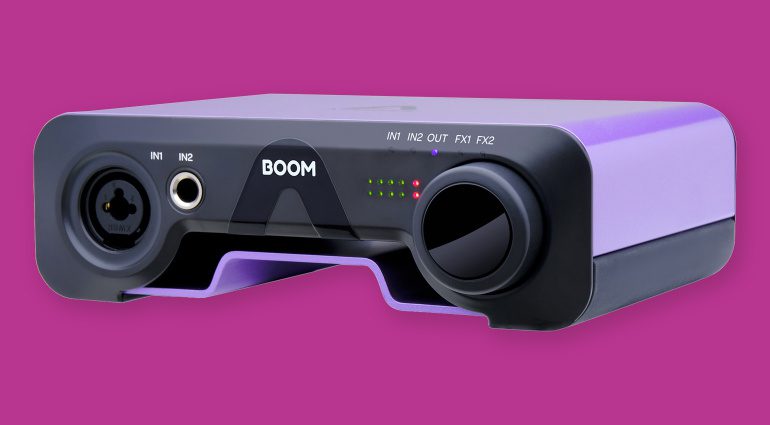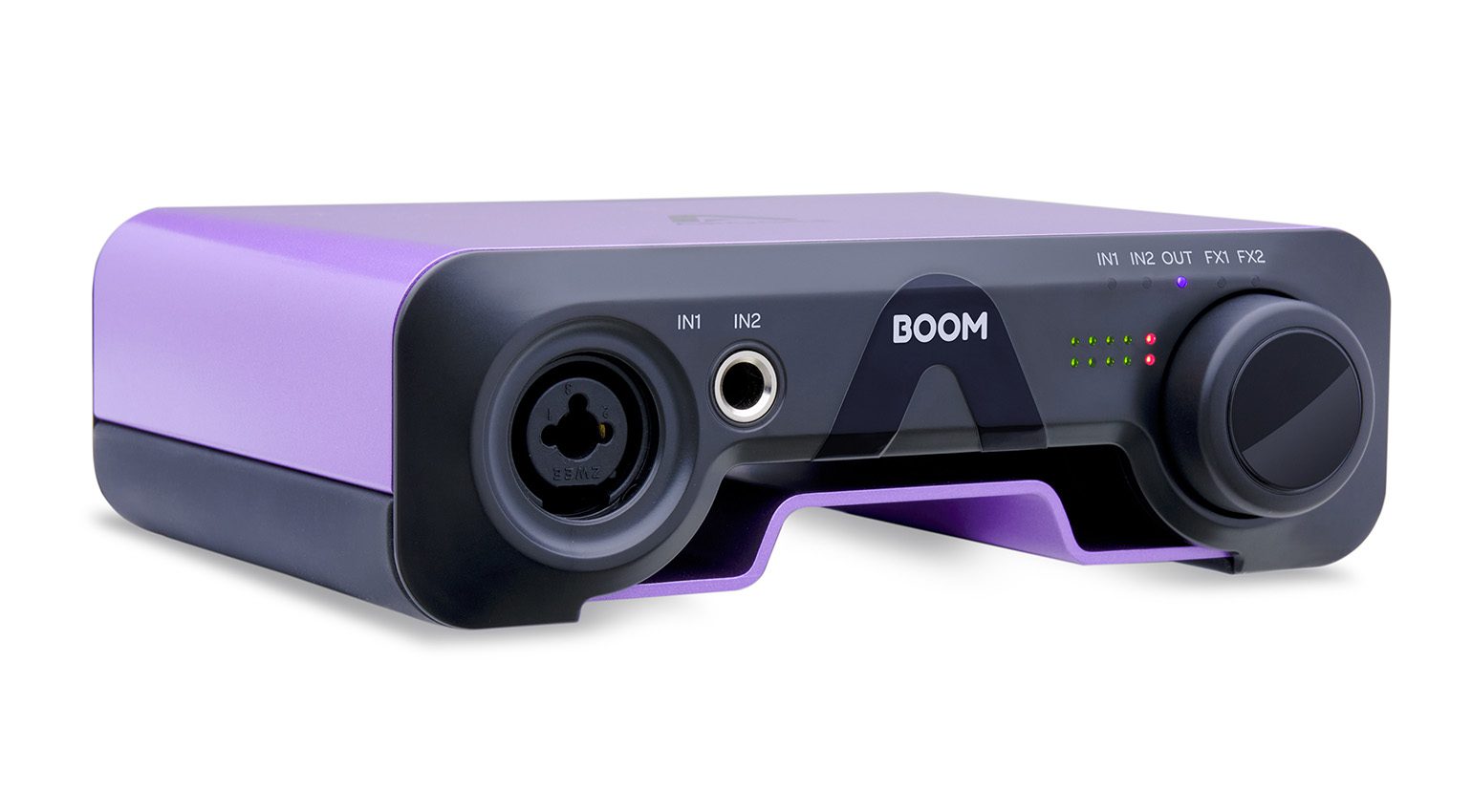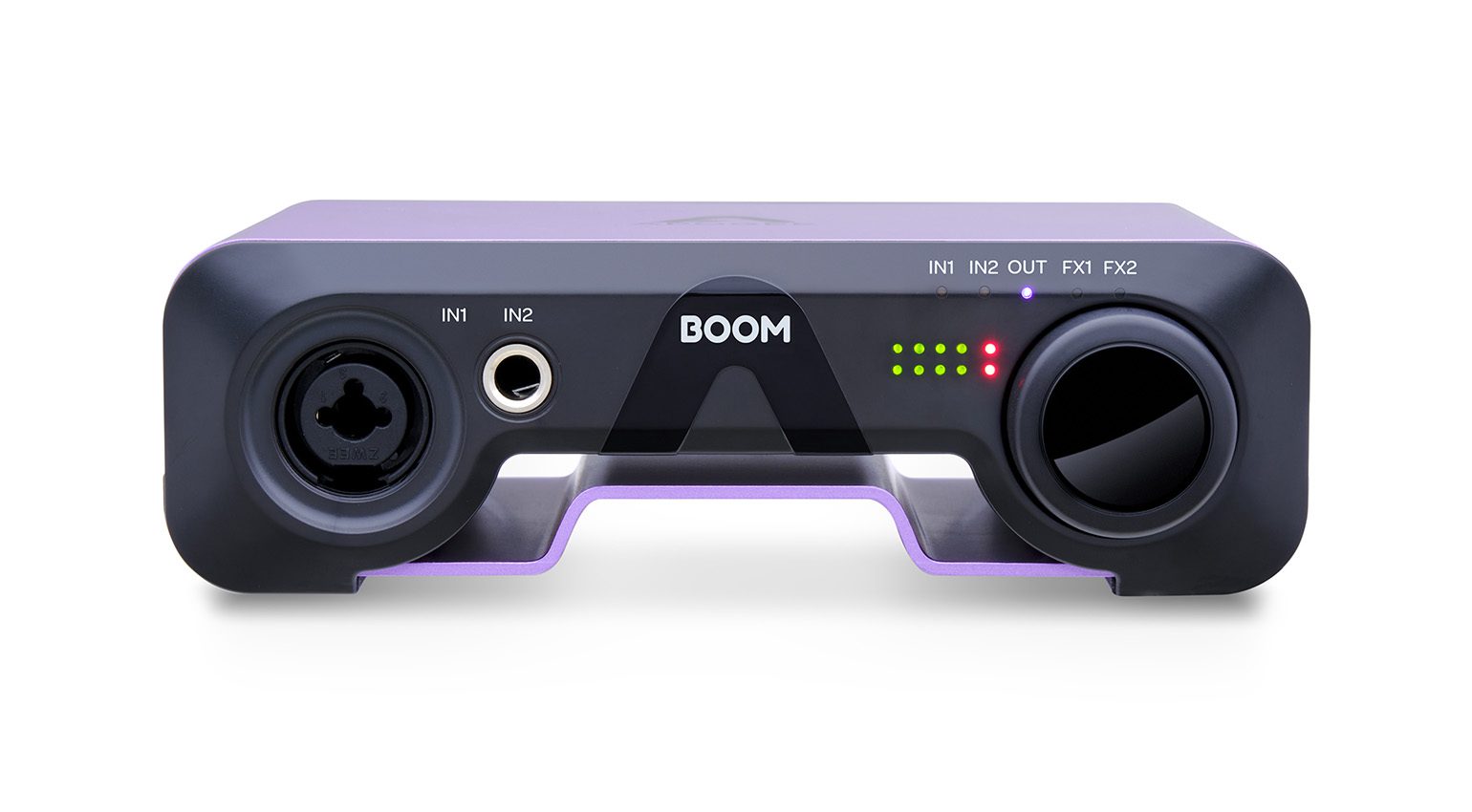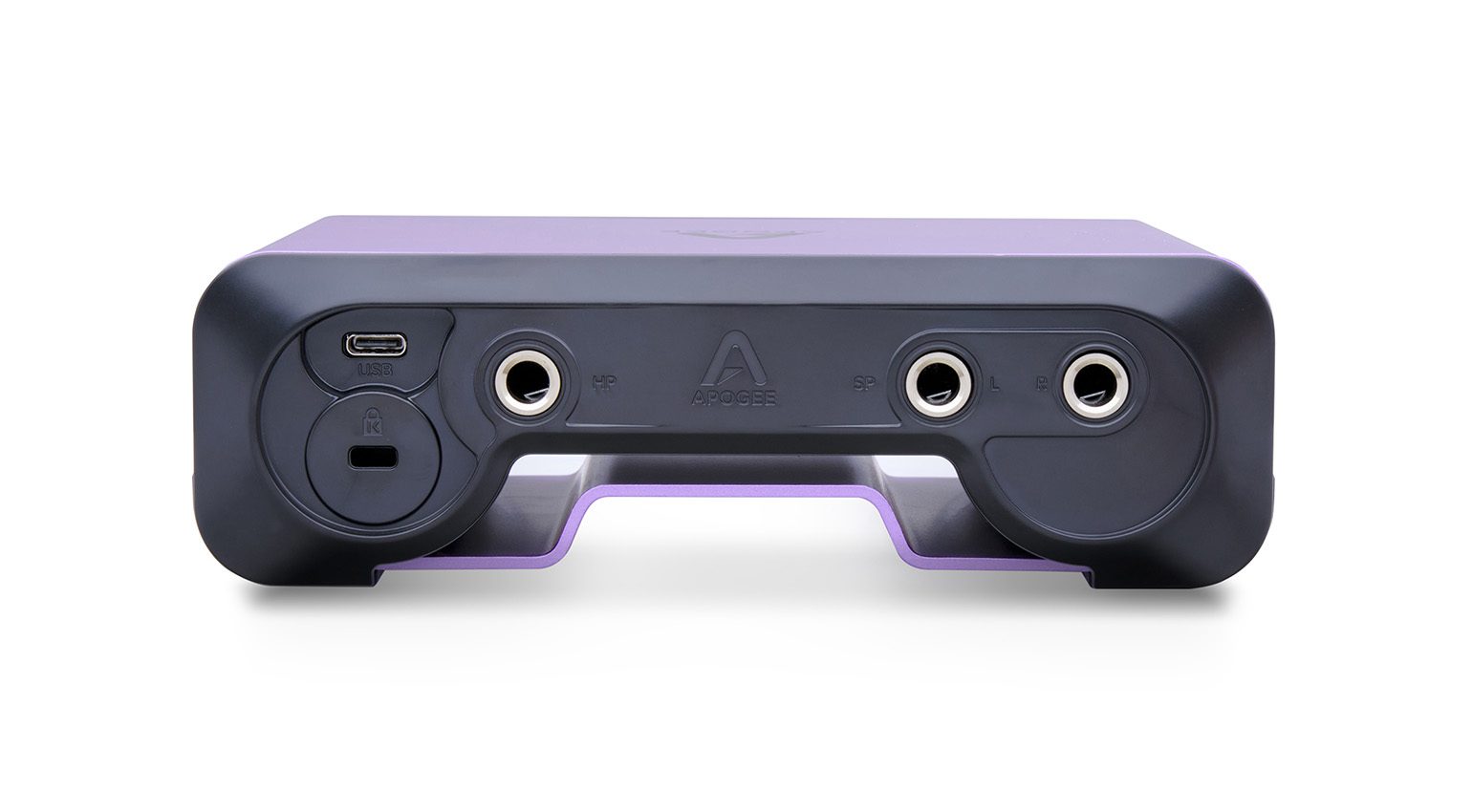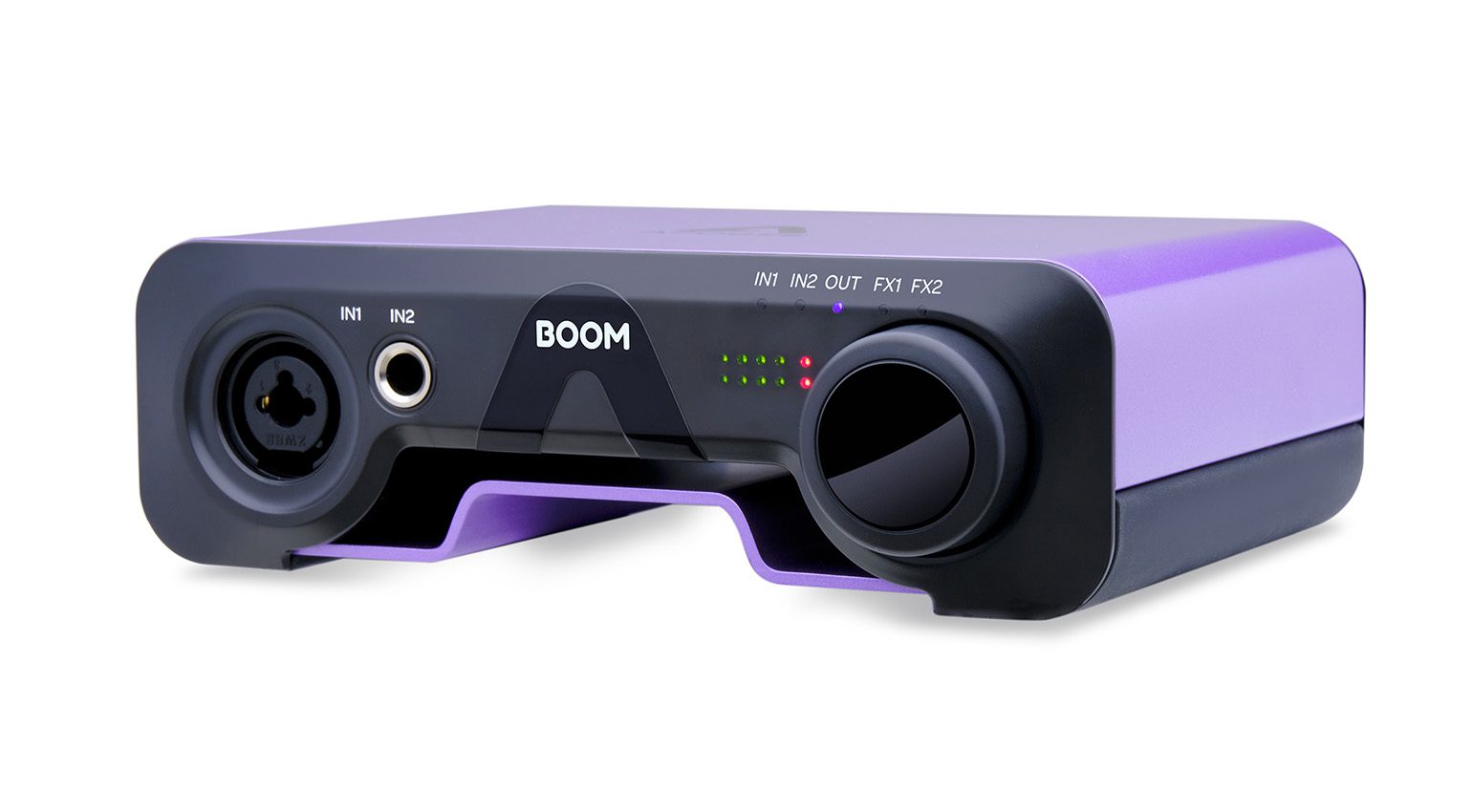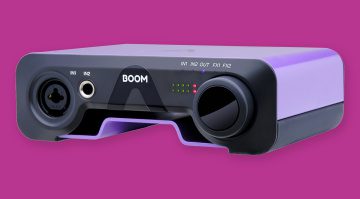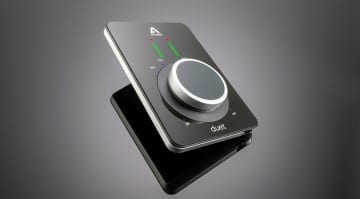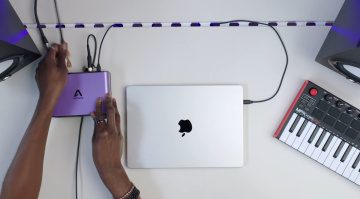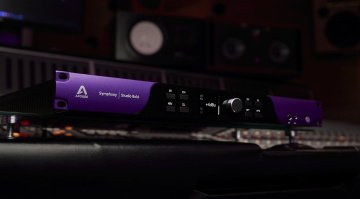Apogee BOOM: That Apogee sound, cheaper and more portable
Apogee has announced BOOM – a new 2×2 USB audio interface that’s more portable and less expensive than the company’s other offerings. With two inputs, one microphone preamp, and built-in DSP, BOOM promises to deliver the sound quality the manufacturer is known for, in a compact format for on the go.
Apogee BOOM
With the release of the new BOOM audio interface, Apogee joins other high-end manufacturers such as Universal Audio or SSL in offering a less costly alternative to its high-priced Symphony and Duet 3 interfaces. That said, BOOM still costs significantly more than typical budget options from companies like Focusrite, M-Audio, or Behringer. According to Apogee, it’s for musicians, podcasters, or live streamers who want to take their sound quality to the next level.
The first thing that meets the eye is the interface’s unusual and rugged design. The eye-catching color (someone at Apogee must really love purple!) is just the beginning. In stark contrast to the Duet’s sophisticated appearance, BOOM looks like something you could toss in a backpack without having to worry about scratching it up. While it’s also designed with streaming, gaming, and multimedia in mind, it’s clearly an interface that’s meant to be taken on the road.
Two inputs, one mic preamp
The bus-powered Apogee BOOM offers two inputs, of which the first one is equipped with a 1/4”-XLR combo jack and a mic preamp. Apogee claims that the preamp is “best-in-class” and that it offers up to 62 dB of gain. Input 2 features a 1/4” jack for connecting instruments or line-level sources. There are no hardware switches for activating phantom power and toggling between different input sources; you need to use the Apogee Control 2 software to do that.
The large knob on the right side of the front panel controls the input gain for inputs 1 and 2, as well as the monitor level. The same goes for the little LED meter next to the knob, which displays either recording or playback levels. You can tap the knob to toggle between modes.
Curiously, Apogee has placed the headphone output on the back next to the USB-C connector, which is a design choice I’m not so sure about. The interface’s two 1/4” line outputs are also on the back. The converters support a maximum resolution of 192 kHz / 24 bit.
Built-in DSP
Take a closer look at the front panel, and you’ll notice two small LEDs for FX1 and FX2. That’s right, BOOM features a built-in DSP that runs the company’s ECS Channel Strip plug-in with a 3-band EQ, compressor, and drive, just like the Duet 3. The effects are processed by the interface, which means that the latency should be low enough to use them during tracking.
Loopback mode
For streamers, BOOM offers a loopback mode for combining the analog input signals with an audio stream coming from the computer, such as a video game, DAW audio, or even chat notifications. You can mix the sources using the Apogee Control mixer.
All in all, Apogee BOOM seems like an interesting new option for a 2×2 audio interface with a focus on sound quality. If you’re ready to step up your audio game, we think it’s definitely worth a closer look.
Price and availability
Apogee BOOM is now available at retailers such as Thomann* for €369. Shipping should begin within a week or so.
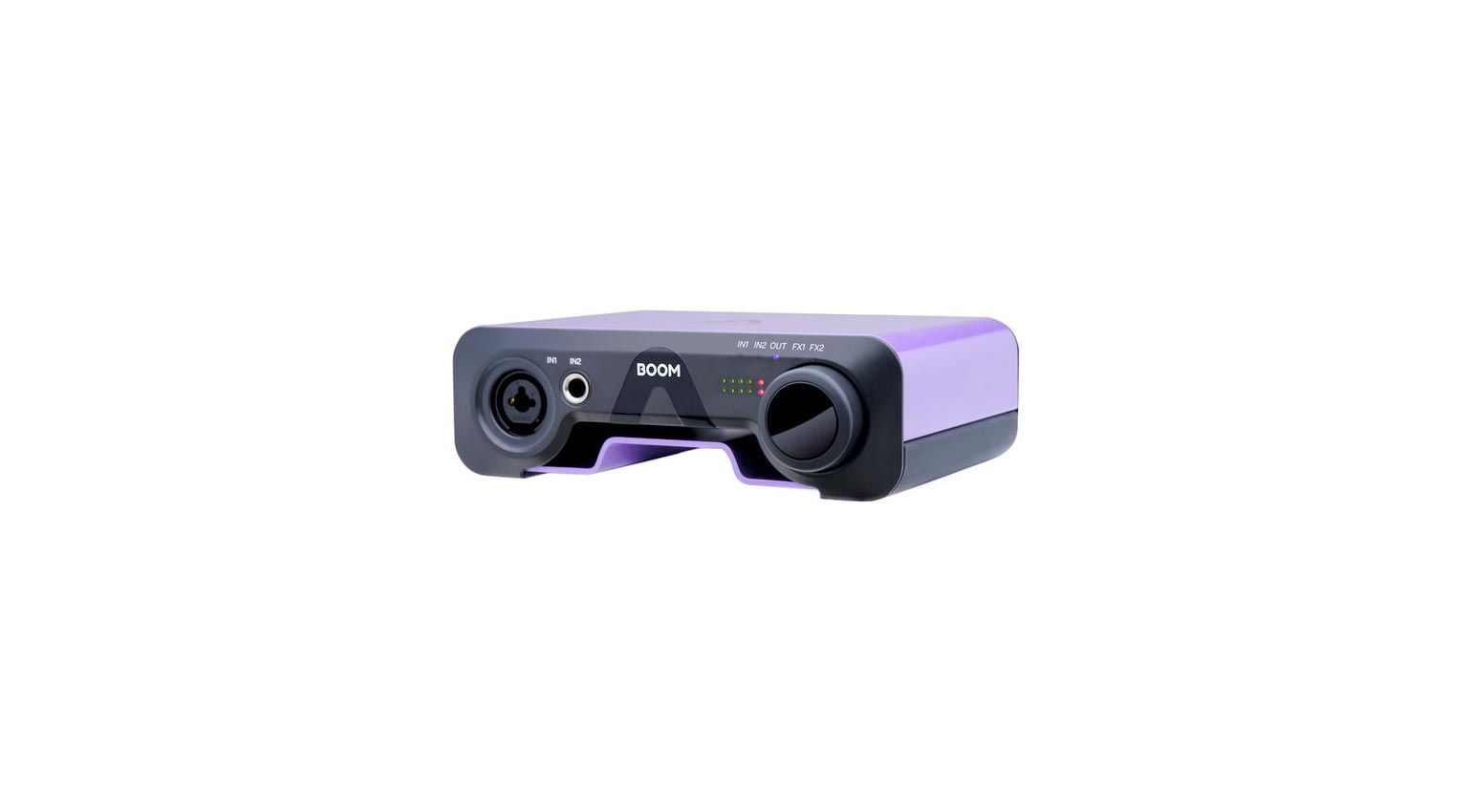
More information about Apogee BOOM
Videos
You are currently viewing a placeholder content from YouTube. To access the actual content, click the button below. Please note that doing so will share data with third-party providers.
You are currently viewing a placeholder content from YouTube. To access the actual content, click the button below. Please note that doing so will share data with third-party providers.
* This post contains affiliate links and/or widgets. When you buy a product via our affiliate partner, we receive a small commission that helps support what we do. Don’t worry, you pay the same price. Thanks for your support!
 3,9 / 5,0 |
3,9 / 5,0 | 